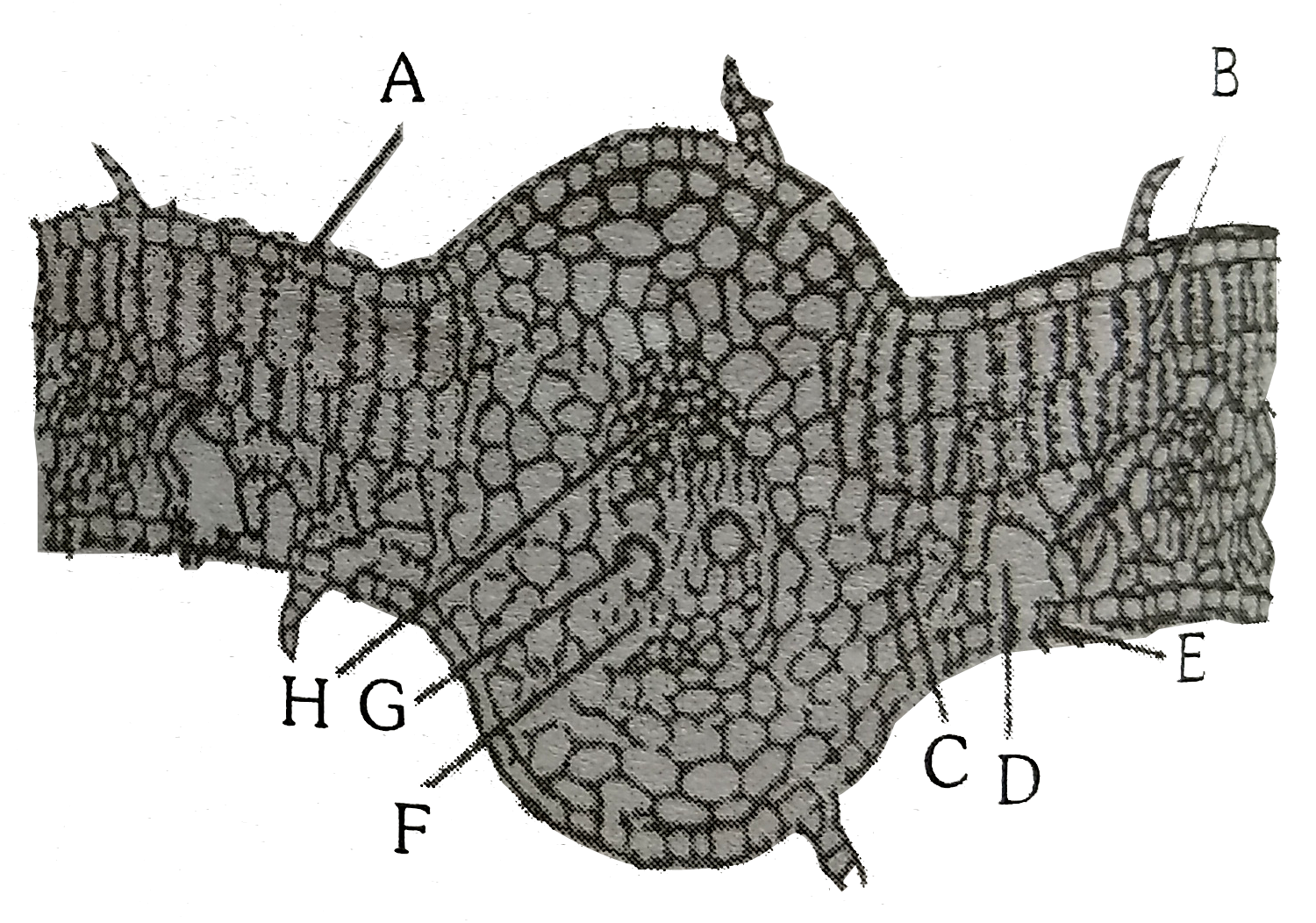MIDRIB
Step-by-Step Solution for the Question: What is Midrib?
1. Definition of Midrib:
- The midrib is a part of the plant, specifically found in the leaves.
2. Location:
- It is located in the center of the leaf.
3. Structure:
- The midrib appears as a long, thin structure that runs down the middle of the leaf.
4. Function:
- The primary function of the midrib is to provide strength and support to the leaf.
- Additionally, from the midrib, smaller veins branch out. These veins are responsible for transporting water and minerals to the leaf.
5. Diagram Reference:
- In diagrams of leaves, the midrib can be identified as the main vein that runs centrally, with smaller veins extending from it.
Summary:
The midrib is a central structure in a leaf that provides strength and supports the transport of water and minerals through smaller veins.
---
- The midrib is a part of the plant, specifically found in the leaves.
- It is located in the center of the leaf.
- The midrib appears as a long, thin structure that runs down the middle of the leaf.
- The primary function of the midrib is to provide strength and support to the leaf.
- Additionally, from the midrib, smaller veins branch out. These veins are responsible for transporting water and minerals to the leaf.
- In diagrams of leaves, the midrib can be identified as the main vein that runs centrally, with smaller veins extending from it.
The midrib is a central structure in a leaf that provides strength and supports the transport of water and minerals through smaller veins.
Knowledge Check
Read the following statements. (a) Simple leaves have bud on the axis of the petiole. (b) In pinnately compound leaf, the midrib forms a common axis called rachis. (c) Paripinnate leaves are found in Cassia. (d) Tripinnate leaves are found in Mimosa. Select the correct option.
A(a), (b) & (c)B(b), (c) & (d)C(a), (b), (c) & (d)DOnly (a) & (d)Fill in the blanks :
a. In a…1…compound leaf a number of leaflets are present on a common ….2…, the rachis, which represents the midrib of the leaf as in …3…
b. In …4… compound leaves the leaflets are attached at common …5… i.e., at the tip of petiole, as in ...6...A1-pinnately,2-point,3-neem,4-palmately,5-axis,6-silk cottonB1-palmately,2-point,3-silk cotton,4-pinnately,5-axis,6-neemC1-pinnately,2-axis,3-neem,4-palmately,6-silk cotton,5-pointD1-palmately-2,axis,3-silk cotton,4-pinnately,5-point,6-neemThe following diagram shows the TS of dicot leaf passing through the midrib, some parts have been indicated by alphabets. Choose the answer in which A,B,C,D,E,F,G and H have been correctly matched with the parts which they indicate
 AA=Epidermis, B= Palisade Parenchyma, C=Spongy parenchyma, D=Stomata, E=Guard cells, F=Phloem, G=Metaxylem, H=ProtoxylemBA=Epidermis, B=Palisade parenchyma, C=Spongy parenchyma, D=Stomata, E=Guard cells, F=Endodermis, G=Xylem, H= PhloemCA=Epidermis, B= Palisade parenchyma, C=Spongy parenchyma, D=Sub stomatal cavity, E=Guard cells, F=Phloem, G=Metaxylem, H= ProtoxylemDA=Epidermis, B= Spongy parenchyma, C= Palisade parenchyma, D= Stomata, E= Guard cells, F= Phloem, G= Metaxylem, H= Protoxylem
AA=Epidermis, B= Palisade Parenchyma, C=Spongy parenchyma, D=Stomata, E=Guard cells, F=Phloem, G=Metaxylem, H=ProtoxylemBA=Epidermis, B=Palisade parenchyma, C=Spongy parenchyma, D=Stomata, E=Guard cells, F=Endodermis, G=Xylem, H= PhloemCA=Epidermis, B= Palisade parenchyma, C=Spongy parenchyma, D=Sub stomatal cavity, E=Guard cells, F=Phloem, G=Metaxylem, H= ProtoxylemDA=Epidermis, B= Spongy parenchyma, C= Palisade parenchyma, D= Stomata, E= Guard cells, F= Phloem, G= Metaxylem, H= Protoxylem
